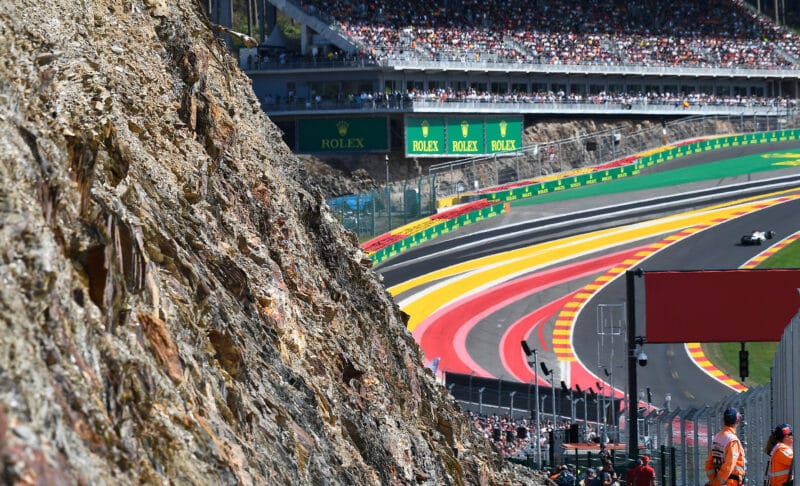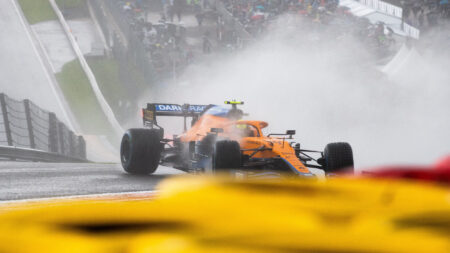Being quick through that section determines how well you will be placed to overtake or defend from an overtake into Les Combes at the end of the long straight, so no-one is giving an inch or lifting their foot. It might even be raining and so visibility even after you crest the rise can be close to zero. You can’t lift in the pack just because you can’t see; that would be even more dangerous. So you sit there, almost a passenger, trying to keep the brain closed and the throttle open and wait for it to pass, after which you’ll be reprieved for another minute-and-a-half.
The track’s general contours were formed by tectonic uplift around 10,000 years ago, likely the very same uplift which also created the Nürburgring’s equally dramatic contours an hour’s ride down the road. The groundwork for two of the world’s greatest race tracks was laid as the huge weight of the ice during the deglaciation period was removed from the earth’s crust here and its varying elasticity meant the rock beneath pushed up at different rates. That’s how Spa’s epic scale of elevation was formed. It’s how when you are up at Malmedy you can see the TV helicopter flying through the valley several hundred metres beneath you, cleaving through the canopy of fir trees. Eau Rouge is like it is because of those geological forces, the big climb up the hill, the dramatic rush down through the valley and the marginal ‘is it/isn’t it’ flat of Pouhon.

Tectonic uplift evident just outside La Source, the way the rock has pushed through post-ice-age visible. It has implications 10,000 years later
Grand Prix Photos
Pouhon is still a test of nerve, ability and commitment. Eau Rouge in the dry no longer is. But in the wet it’s still very much a differentiator. Since the run-off was extended some years ago it’s no longer as specifically dangerous as it was. But the danger lies beyond, just over that crest. It’s the hazard of a crashing car bouncing off the barriers back onto the track at a point preceded by a high-speed blind approach. Ideally when a car goes off into the barriers it needs to stay off the circuit after impact, but creating the space that would be needed to do this at this part of the track would be a humungous undertaking for a circuit whose primary event is already economically marginal.



